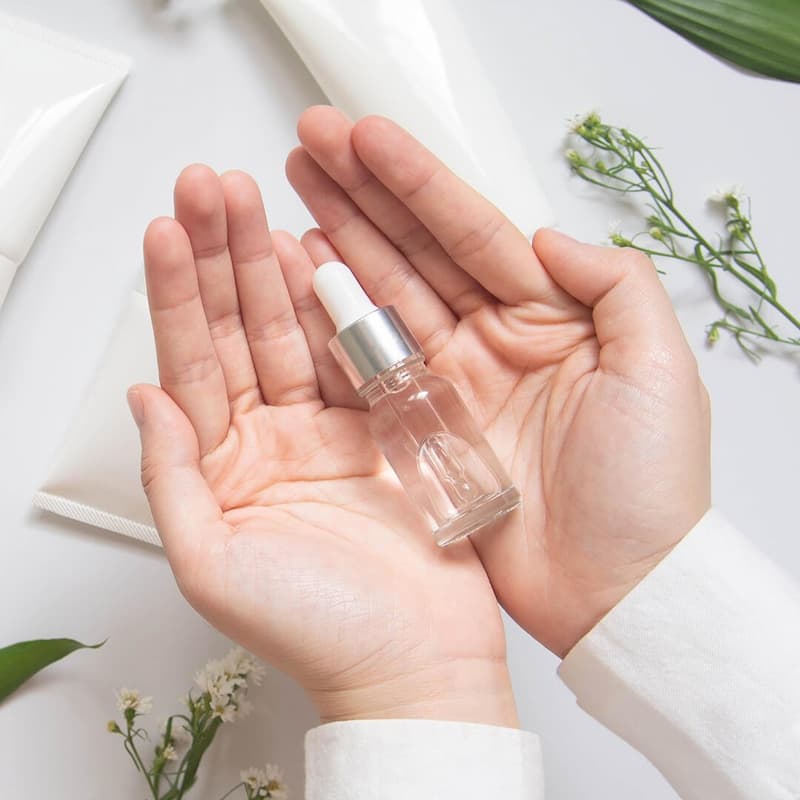Baikal Skullcap|Multifunctional skin protector
Baikal skullcap (Scutellaria Baicalensis) is not only a precious material of ancient but also a plant extract commonly used in science. Scholars have extracted the effective active ingredients in the Baikal skullcap through scientific technology. Such as Baicalin, Wogonoside, Baicalein, Wogonin…etc. What kind of efficacy do these extracts have? How do we reflect its effect in the formula? This article will take you to know.
Protect your skin
The compounds contained in Baikal Skullcap have the property of high UV absorption. Seo et al. (2016) found that sunscreens supplemented with Baikal Skullcap improved the product’s SPF and increased skin protection. Therefore, it is a gentler natural sunscreen on the skin.
Care for sensitive skin
The main active substances of S. baicalensis, baicalein, baicalin, wogonin, wogonoside, and pyroxylin A, all have the effect of soothing skin discomfort. The review article in the famous journal Pharmacological Research-Modern Chinese Medicine in 2022 also included Baikal Skullcap as a soothing ingredient in sensitivity cosmetics.
Brighten dull skin
In addition to soothing, Baikal Skullcap also has a brightening effect. Kudo et al. found that Baikal Skullcap had a whitening product in 2017. This research provides a new option for plant extracts with whitening effects.
Fight oily skin
As a member of soothing plant extracts, Baikal Skullcap also can help reduce acne. Wogonin in Scutellaria can effectively inhibit the reaction caused by Propionibacterium acnes and achieve the effect of stabilizing the skin condition.
To sum up, Baikal Skullcap, a famous oriental herb, its efficacy has also been confirmed by scientists. In addition, with the right formula, it can increase its effectiveness. Unicare, as your skin care product formulator, provides you with various formula options. Welcome, Contact us!
Zhu, Xiaojing, et al. “Enhancement of anti-acne effect of Scutellaria baicalensis extract by fermentation with symbiotic fungus Penicillium decumbens.” Journal of bioscience and bioengineering 130.5 (2020): 457-463.
Azimi, Hanieh, et al. “A review of phytotherapy of acne vulgaris: Perspective of new pharmacological treatments.” Fitoterapia 83.8 (2012): 1306-1317.
Yarnell, Eric, and Kathy Abascal. “Herbal medicine for acne vulgaris.” Alternative & Complementary Therapies 12.6 (2006): 303-309.
Seok, Jin Kyung, et al. “Scutellaria radix extract as a natural UV protectant for human skin.” Phytotherapy Research 30.3 (2016): 374-379.
Guo, Miao-miao, et al. “Anti-allergic activity of natural plant products for the treatment of sensitive skin: A review.” Pharmacological Research-Modern Chinese Medicine (2022): 100117.
Ahn, Sang Hyun, and Ki Bong Kim. “Effect of anti-inflammation through creation of skin fat barrier on Scutellaria baicalensis extract.” The Journal of Pediatrics of Korean Medicine 35.1 (2021): 40-47.
Jung, Hyuk-Sang, et al. “Antiallergic effects of Scutellaria baicalensis on inflammation in vivo and in vitro.” Journal of ethnopharmacology 141.1 (2012): 345-349.
Liao, Hengfeng, et al. “The main bioactive compounds of Scutellaria baicalensis Georgi. for alleviation of inflammatory cytokines: A comprehensive review.” Biomedicine & Pharmacotherapy 133 (2021): 110917.
Muluye, Rekik A., Yuhong Bian, and Paulos N. Alemu. “Anti-inflammatory and antimicrobial effects of heat-clearing Chinese herbs: a current review.” Journal of traditional and complementary medicine 4.2 (2014): 93-98.
Kim, Tae-Won, et al. “Assessment of dermal safety of Scutellaria baicalensis aqueous extract topical application on skin hypersensitivity.” Planta medica 79.11 (2013): 959-962.
Kudo, Michiko, Kumiko Kobayashi-Nakamura, and Kentaro Tsuji-Naito. “Bifunctional effects of O-methylated flavones from Scutellaria baicalensis Georgi on melanocytes: Inhibition of melanin production and intracellular melanosome transport.” PLoS One 12.2 (2017): e0171513.
Chi, Yeon Sook, et al. “Effects of wogonin, a plant flavone from Scutellaria radix, on skin inflammation: in vivo regulation of inflammation-associated gene expression.” Biochemical pharmacology 66.7 (2003): 1271-1278.



